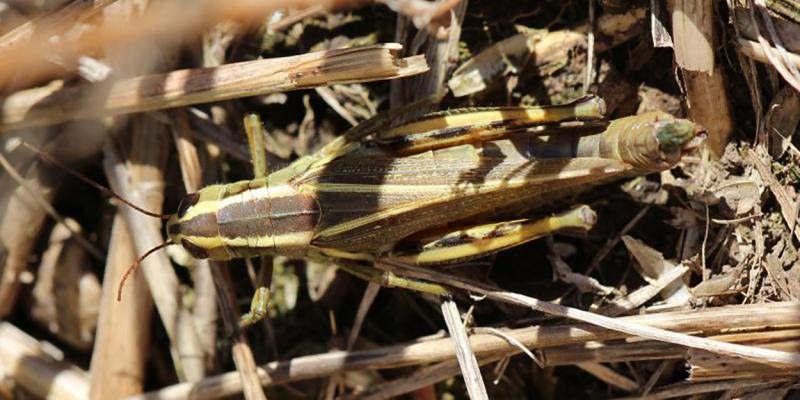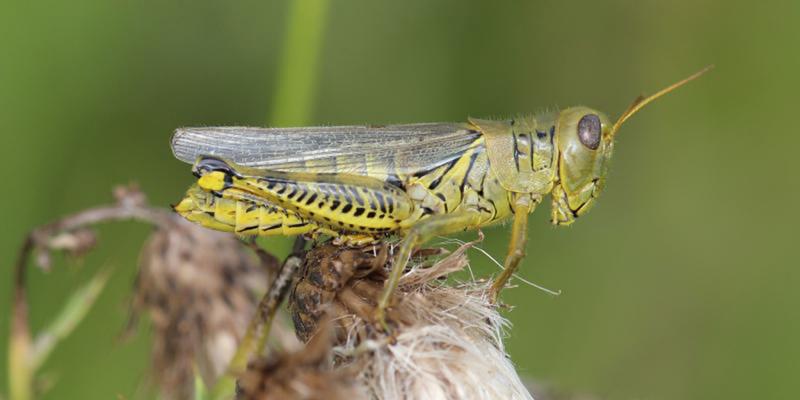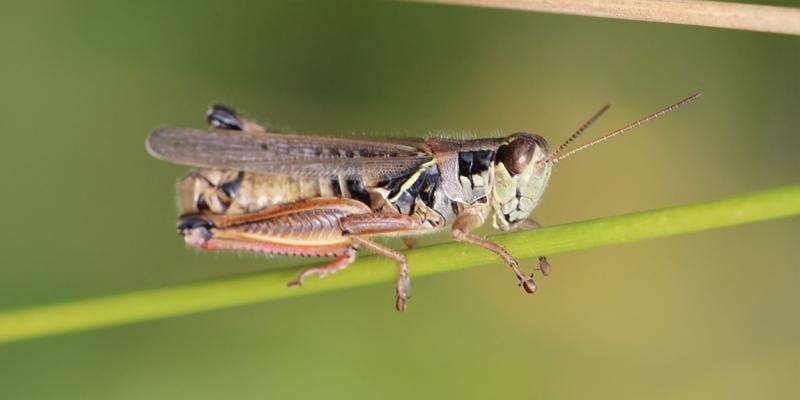
Originally Submitted: September 14, 2021
Grasshoppers are currently causing trouble in gardens. Although grasshoppers are common in gardens and yards throughout the year, they normally don’t cause severe defoliation or feeding damage. However, due to large populations and dry conditions, the grasshoppers are moving into gardens and feeding on whatever they can find. This includes the leaves and developing produce within gardens. Grasshoppers will also feed on trees when food becomes scarce. Typically, grasshopper infestations are worse in areas experiencing dry conditions. In a normal year, grasshoppers can be a nuisance in a garden, but during an outbreak year, they can present a real threat to gardens, shrubs and small trees.

There are three species of grasshoppers that are responsible for almost all the grasshopper problems that we are observing. They are the twostriped grasshopper (Figure 1), differential grasshopper (Figure 2) and redlegged grasshopper (Figure 3).
If grasshopper populations are causing severe defoliation in a garden, the use of a foliar insecticide may be warranted to protect the garden produce, but be aware of pre-harvest intervals. Grasshopper feeding on small trees and shrubs should be closely monitored, as this can seriously affect them. Treating the trees and shrubs may reduce the grasshopper feeding, but this will only last as long as the insecticide residual.

There are several products that can be purchased without a private pesticide applicator certification. We are a little late in the season to apply insecticides to target grasshopper nymphs, but a general rule of thumb is that treating grasshoppers when they aren’t fully grown (½ to ¾ of an inch long) increases the chance of successful management.
If grasshoppers are feeding on produce, such as tomatoes, the best approach is harvesting the tomatoes early and then ripening them indoors. Although grasshopper feeding is often minor, it does increase a plant’s susceptibility to growth of fungi and feeding damage from other insects.
In addition to spraying, watering areas around gardens and trees will slow down grasshopper feeding. Keeping green grass will encourage grasshoppers to feed there instead of on the garden plants. Also, by leaving a border of tall grass around the yard, the grasshoppers will have a food source and will not move into the rest of the yard as quickly.
To greatly reduce grasshopper populations in yards, the margins of the yard should also be treated. This would include road ditches, areas with tall grasses or weeds. In all cases, make sure to read the insecticide labels and follow all label recommendations.


